 |
|
HOME
|
US Navy -
ships
|
US Navy - air
units
|
USMC - air
units
|
International
Navies
|
Weapon Systems
|
Special Reports |
|
|
|
|
|
German Navy - Deutsche Marine Type 126 (MKS 180) class Frigate |
|
|
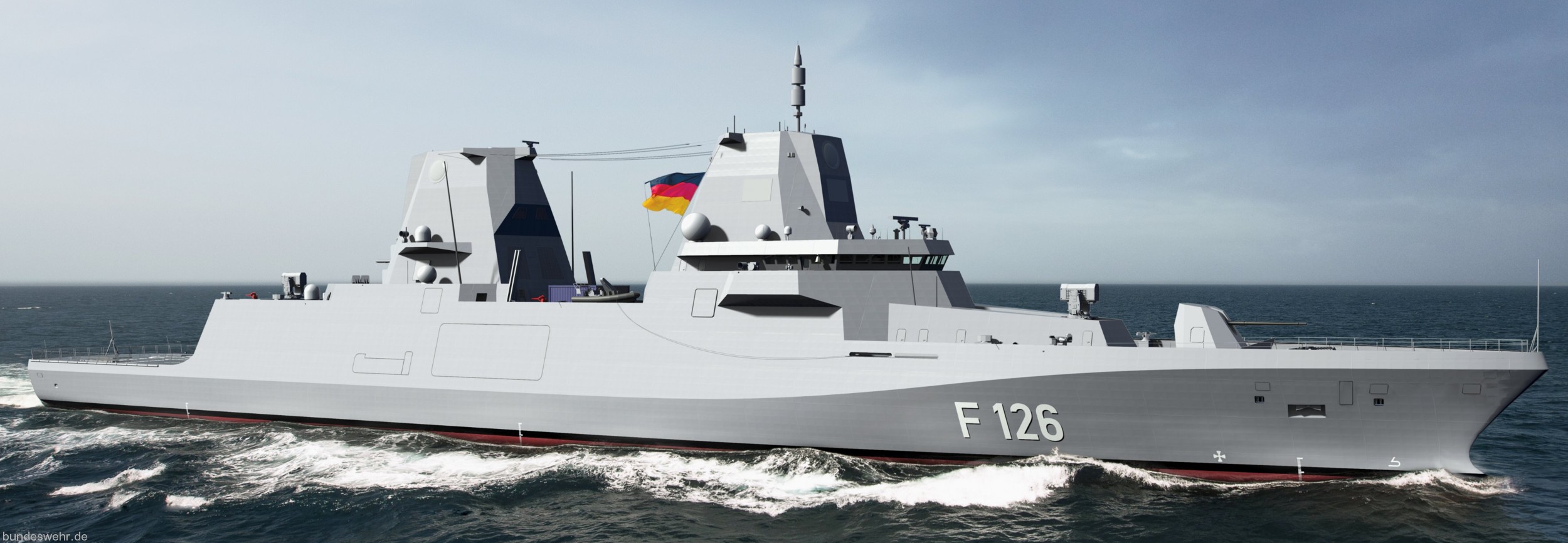 |
| 06/24 |
| Ships: |
|
F 227 FGS Niedersachsen (2028?) F 228 FGS Saarland F 229 FGS Bremen F 230 FGS Thüringen F 231 FGS ? F 232 FGS ? |
| Specifications: |
|
Builders: Damen Group / Blohm + Voss, Hamburg / Lürssen, Bremen / German Naval Yards, Kiel Displacement: 10,000 tons (full load) Length: 166 meters (544 feet 7 inches) Beam: 21 meters (68 ft 1 in) Draft: 6 meters (19 ft 8 in) Speed: 26+ knots (48+ km/h), max. Range: 4,000 NM (7400 km) at 18 knots (33 km/h) Complement: 114 standard ship's crew (accommodation for 200) Propulsion: CODLAD (Combined Diesel-Electric and Diesel) 4 x MTU 20V 4000 M65L Diesel Generators (2 x 12,000 kW) 2 x MAN 32/44CR Electric Motors (2 x 4,000 kW) 2 shafts / 2 controllable pitch propellers Armament: 1 x Mk.41 Vertical Launching System / VLS (16 cells) for RIM-162 Evolved Sea Sparrow Missiles / ESSM (4 per cell) 1 x OtoBreda/Leonardo 127/64LW (5"/ 127mm / 64-caliber) gun with guided VULCANO ammunition 8 x Kongsberg Naval Strike Missile (NSM) 2 x Mk.49 missile launching system for RIM-116 Rolling Airframe Missiles (RAM) 2 x MLG27 4.0 SeaSnake machine gun systems 2 x Leonardo Lionfish 12.7 weapon system Aviation: flight deck & hangar for 2 x NH90 Sea Tiger Helicopter + Saab Sceldar UAV Systems: Thales TACTICOS Combat Management System (CMS) Hensoldt TRS-4D NR multi-function surveillance radar Thales X-band APAR Block 2 multi-function fireradar Active/passive low frequency variable depth towed sonar (if the ASW module is fitted) Thales Mirador MK2 and Gatekeeper electro-optical tracking and observation system |
|
|
|
F126 or Frigate 126 (Fregatte 126) is a
planned German frigate class intended to replace the F123
Brandenburg-class frigates in the German Navy. The ships are to be
the largest surface warships to join the Navy since World War II.
The first ship is planned to be commissioned in 2028. Until 1 January 2021, the project was known under the working title MKS 180 or Multi-Purpose Combat Ship 180 (Mehrzweckkampfschiff 180), with 180 indicating the classes planned complement. Characteristics: The class is to be mission modular and is capable of accommodating so-called mission modules which include devices, space, sensors and weaponry necessary to carry out a given task optimally. If not in use, the modules can be maintained and replaced separate from the ship and also be exchanged between different ships in the class. The ships are planned to replace the Brandenburg-class in their anti-submarine warfare role if fitted with a modular towed array sonar (the ASW module). Similar to the Baden-Württemberg class however, they will also be able to stay at sea for up to two years without requiring maintenance at port, with crews rotating to and from the deployed ship every four months. This capability is expected to allow for a more efficient use of hulls by reducing the time spent during transfer from Germany to conflict zones such as the sea off the Horn of Africa where German ships repeatedly took part in counter-piracy missions such as Operation Atalanta, patrolling large areas for a long time. In this case, the "detention module" enables the crew to detain suspects and if need be quarantine them in a purpose-built medical facility. Other intended uses are the enforcement of embargoes, escorting merchant shipping or commanding maritime task forces. In 2015, modules for mine countermeasures (MCM) and a diving chamber were planned as well. Project history: Competitive evaluation and design selection: First studies for a class of future surface ships were initiated in 2009. At the time, the goal was to develop a replacement for the Type 143A Gepard class fast attack missile craft. In reference to the five K130 class corvettes which were set to replace the older Type 143 Albatros class FACM, the project was termed MÜKE (Mittlere Überwasserkampfeinheit) or K131. Eight ships were planned to join the navy by the early 2020s and then be available into the 2050s. The ships were to be mission modular. The Navy, increasingly tasked with conducting long overseas deployments with an aging fleet of ships influenced by cold war requirements, wished to obtain flexible ships that could be rapidly modified depending on need. This design driver, also influencing the Baden-Württemberg class frigates at the time, caused the projected design to increase in displacement and complement compared to a typical corvette. By early 2011, the project was therefore expected to result in a "Multi-Role Combat Ship" (Mehrzweckkampfschiff). On March 25, 2013 the detailed requirements were formally decided on. During the following analysis phase, three designs were suggested, one fulfilling all requirements and two other less expensive ones fulfilling them partially. On June 8, 2015 the fully compliant design was selected. By 2015 the number of ships had been cut to four with the first hull entering service by 2023 at a planned total cost of around 4 billion Euros and two more ships in a potential second batch. Crucially, the MKS 180 project had now grown to be the replacement for the four aging F123 Brandenburg class frigates, representing the Navies primary anti-submarine warfare (ASW) capability. The 2015 tender was open for bids from European companies, with Minister of Defence Ursula von der Leyen deciding not to prevent foreign bidders from participating under national security reasons. Several companies participated, among them: - BAE Systems and German Naval Yards - Damen Group and Blohm + Voss - Thyssenkrupp Marine Systems and Lürssen In mid 2017, BAE Systems, offering a ship based on the Type 26 Frigate, withdrew from the tender and in March 2018 the German government excluded the Thyssenkrupp/Lürssen consortium. Thyssenkrupp Marine Systems then partnered as a subcontractor to German Naval Yards, while Lürssen effectively became a partner to Damen, having acquired Blohm + Voss in 2016. In January 2020 after a five year long bidding process the Dutch Damen Group won the tender, although the ships will be constructed at the Blohm + Voss shipyard in Hamburg, Germany and at the Peene-shipyard in Wolgast, Germany, both owned by Lürssen Group. German Naval Yards protested the award, delaying the required legally binding contract signature. However, the company withdrew its protest when it and Lürssen announced they would pool their naval shipbuilding in a joint venture and that the Kiel shipyard would participate in construction. Contract award: The contract was signed on June 17, 2020. In June 2020 the German parliaments budgetary committee officially cleared 6 billion Euros for the first four ships and two options with the first ship planned to be commissioned by 2027. The contract awarded to Damen covers the ships, training facilities as well as two ASW and two detention modules and amounts to 5,48 billion Euros while weapons are contracted separately. Initial operating capability for the ships - to be based in Wilhelmshaven - is expected in 2028. Thales at its facilities in the Netherlands and Germany will provide radar, IT and fire control systems, in particular the Tacticos combat management system and the AWWS (above water warfare system) fire control solution. In November 2020, the provider of the underwater warfare suite had yet to be decided. Wärtsila SAM Electronics in Hamburg will integrate the ships electrical systems while Canadian company OSI Maritime is delivering the navigation suite and Rolls-Royce unit Power Systems is responsible for the ship platform management and automation systems. ABB was awarded a contract to supply the ships DC power system. Electric drive motors and the gearbox will be provided by Renk. Construction: The design is to pass a critical design review in early 2022, after which construction of the first ship will begin in 2023 while keel laying is intended for 2024. While the ships will be constructed in Wolgast, the aft ships will be built in Kiel where both will be joined. Fitting, tests and trials are to take place in Hamburg. The Hamburg Ship Model Basin (HSVA) is conducting model-based flow testing. source: wikipedia (10/22) |
| images |
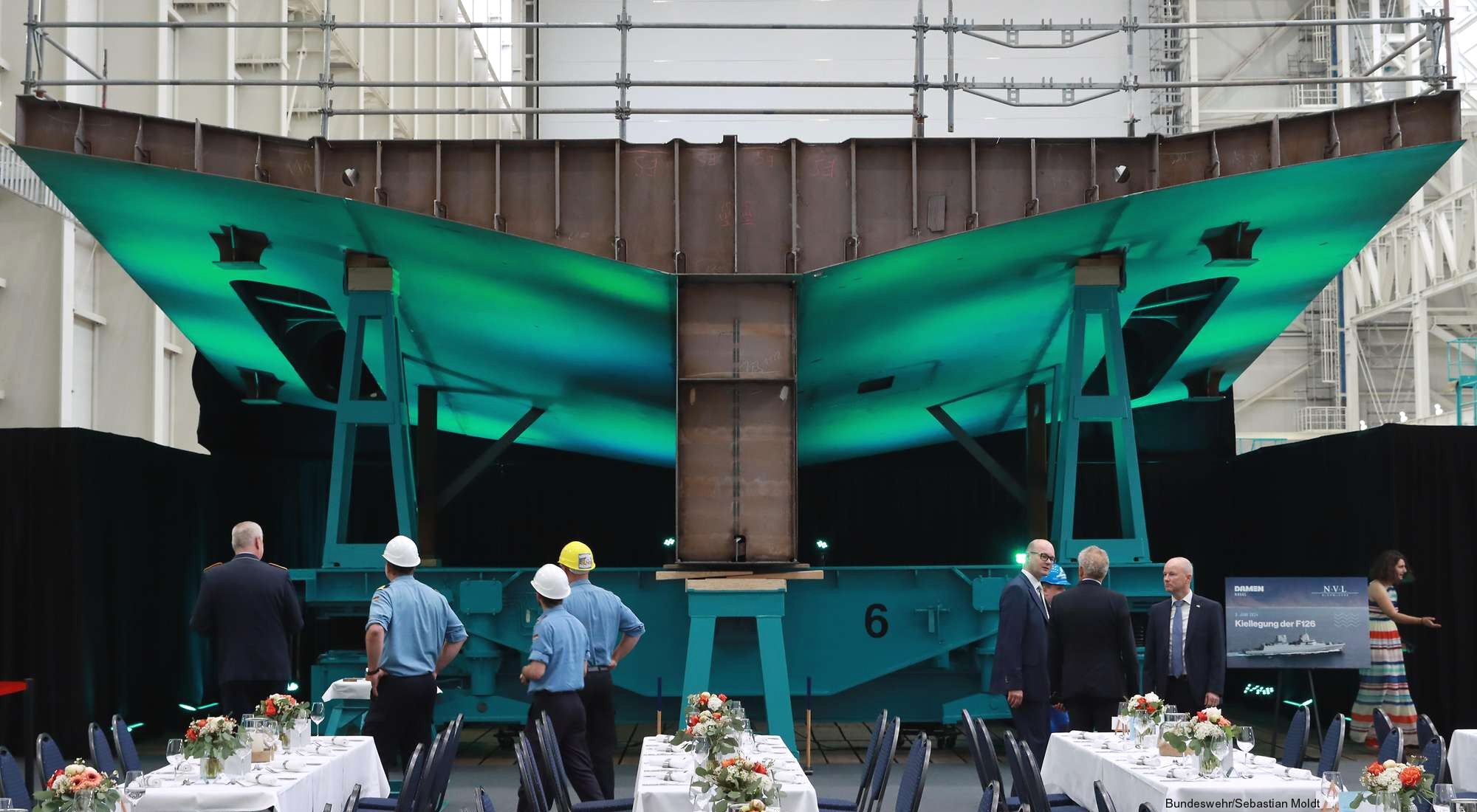 future F 227 FGS Niedersachsen - keel laying ceremony at Peene-Werft, Wolgast, Germany - June 3, 2024 (construction started on December 5, 2023) 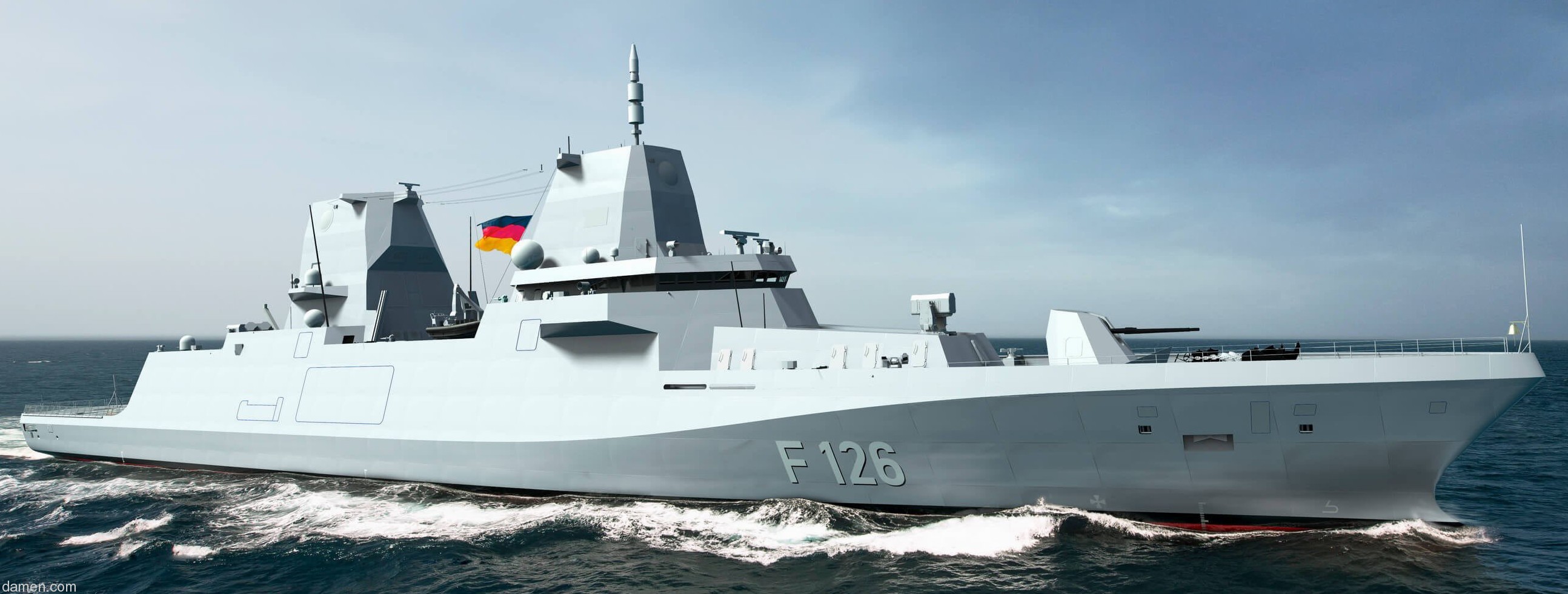 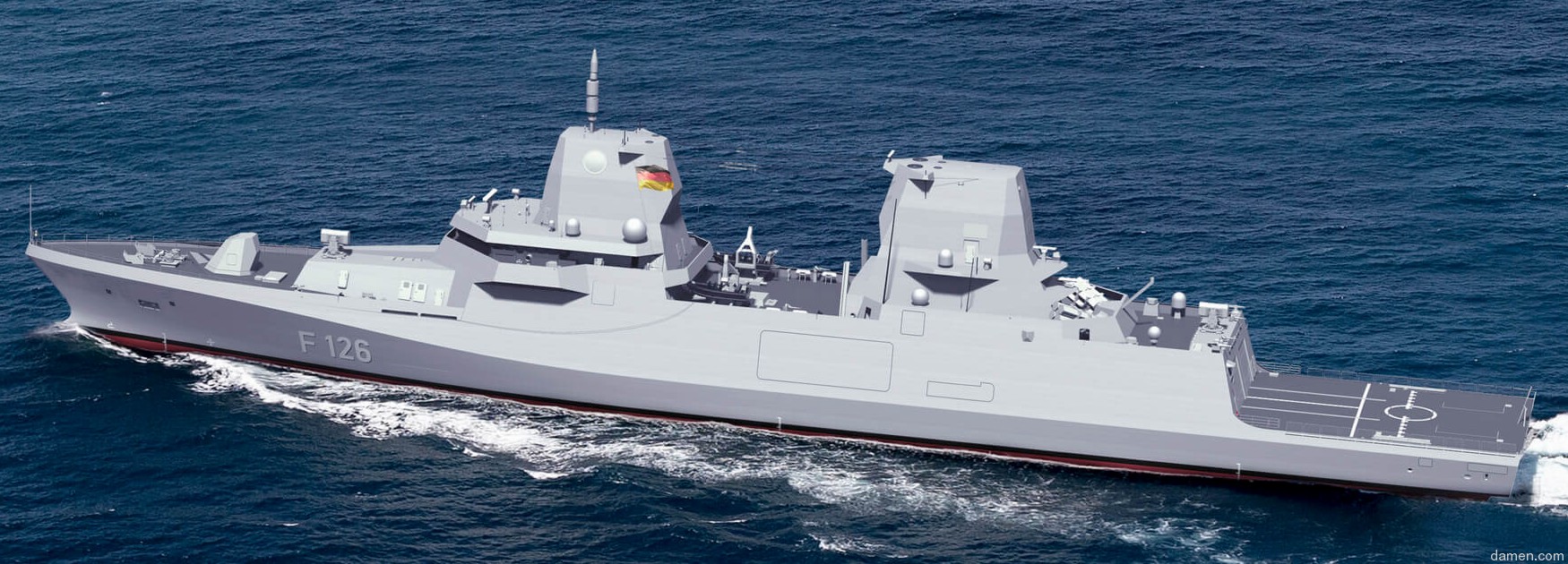 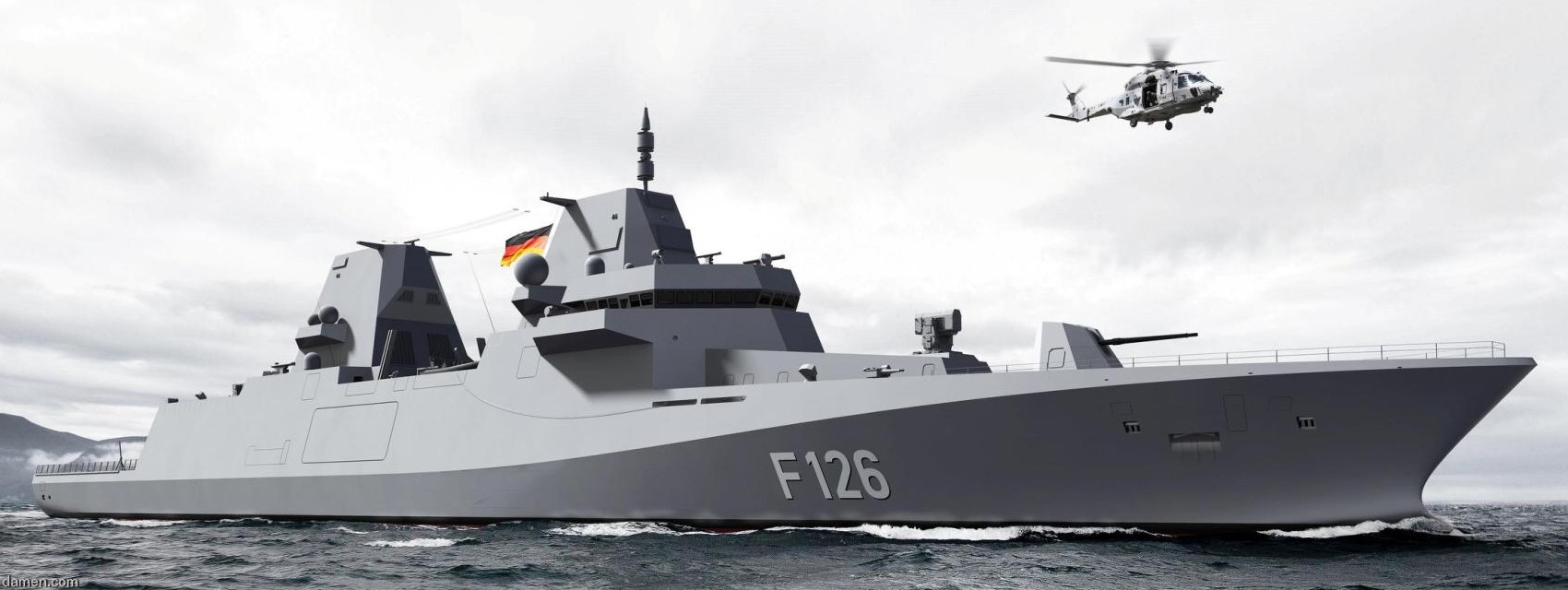  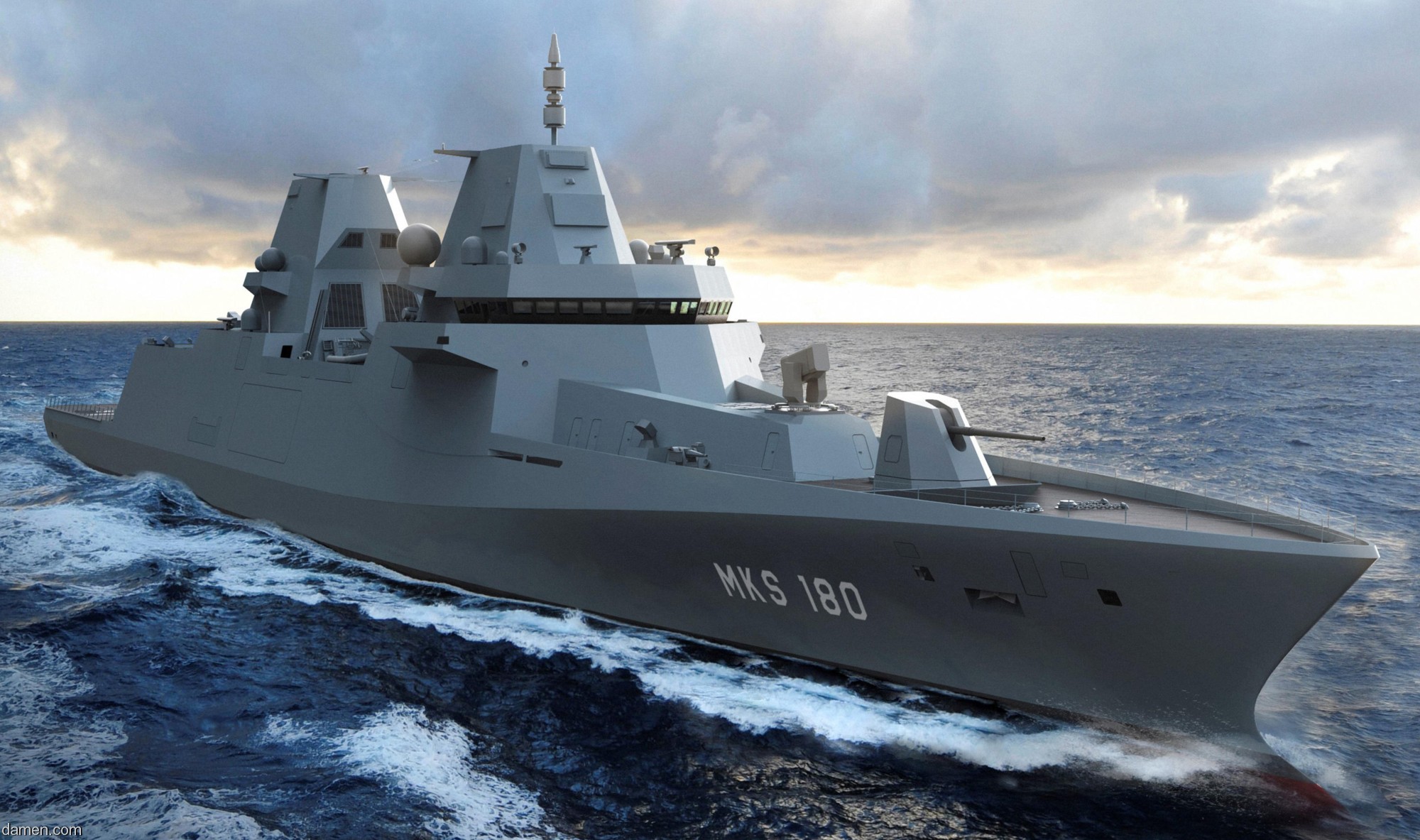   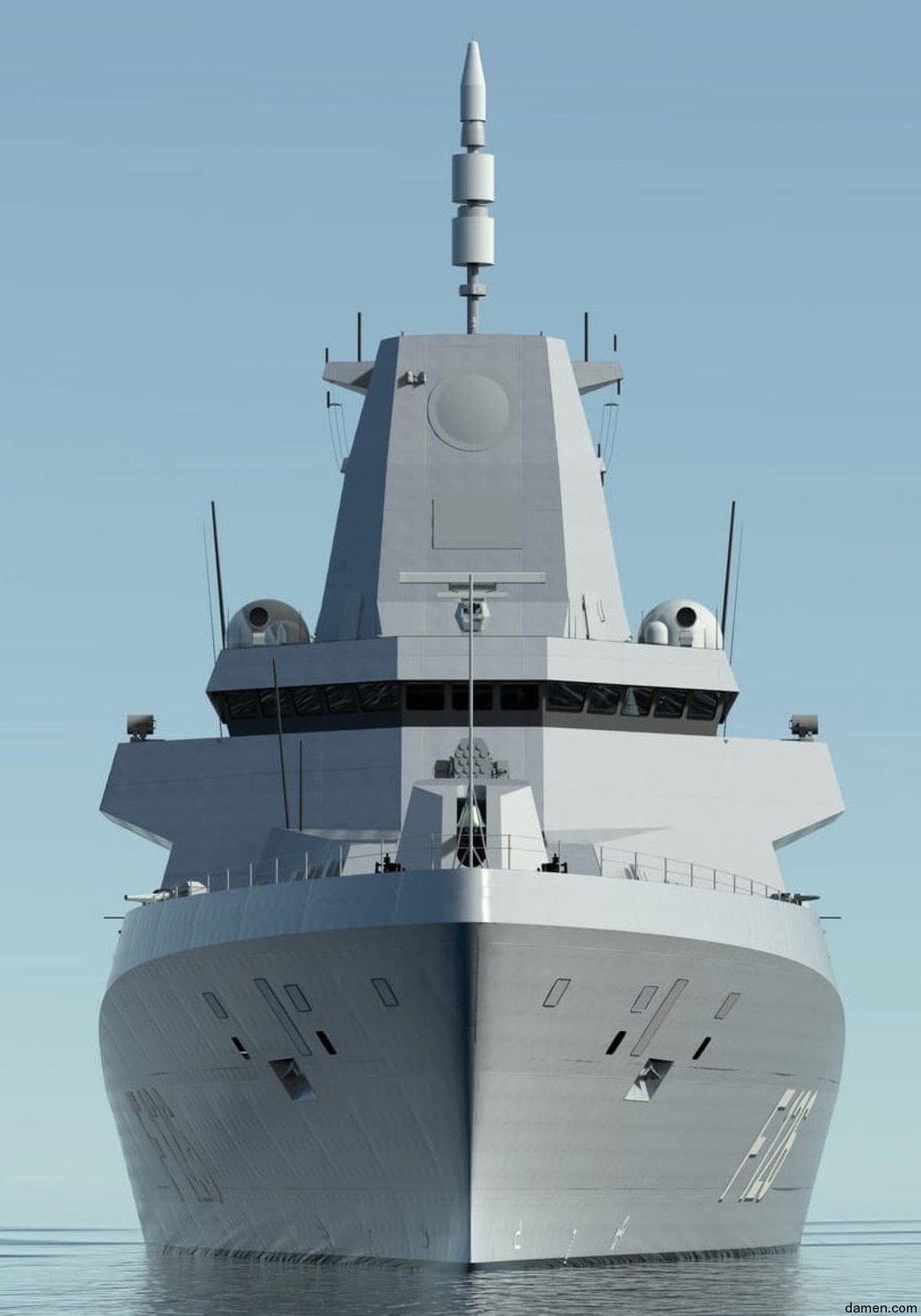 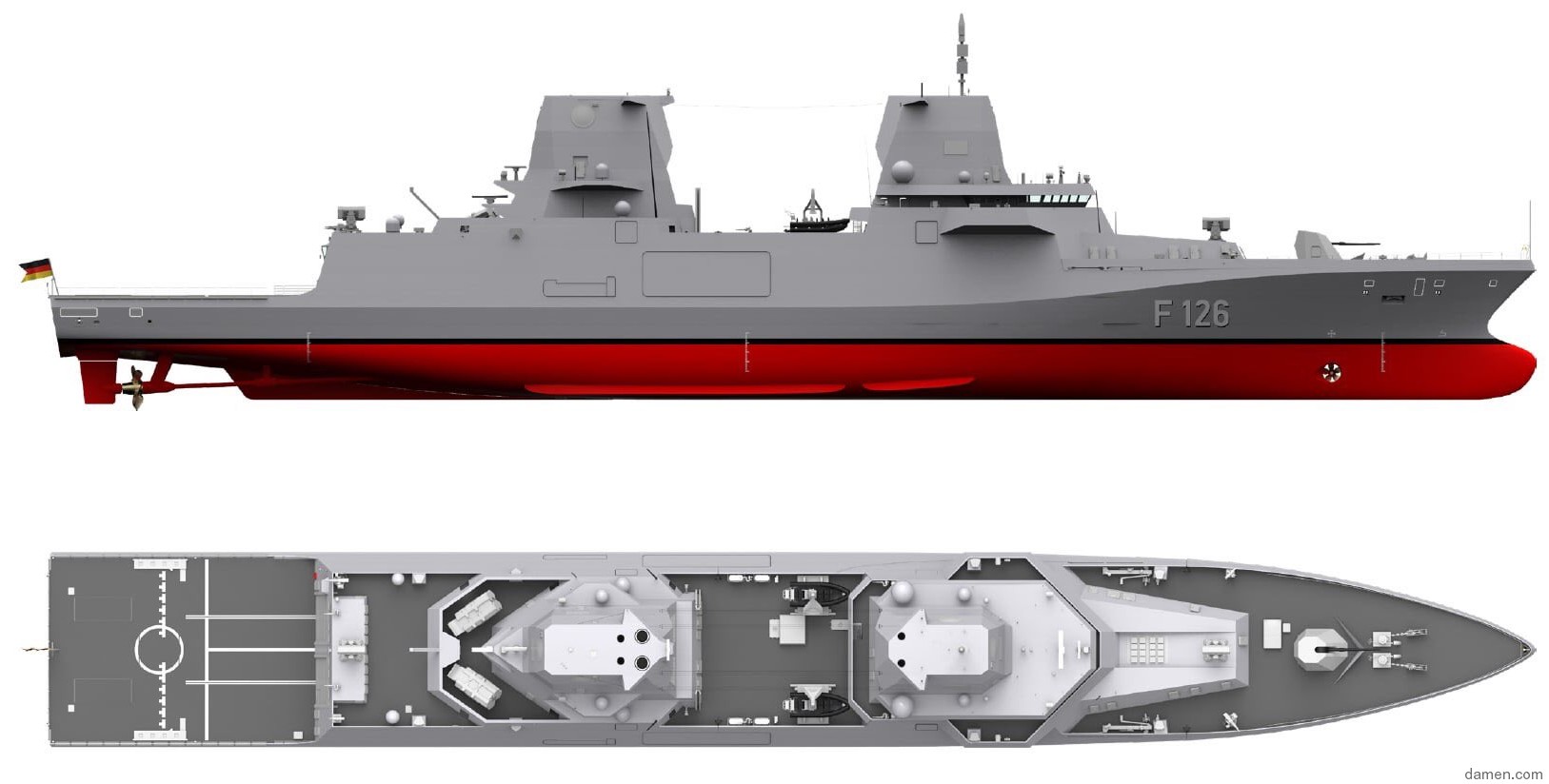  |
|
|
|
|
seaforces.org
|
German
Navy start page
| |